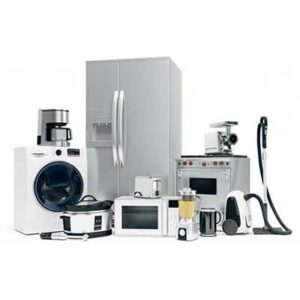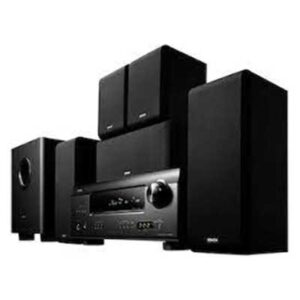What Is The Power Consumption Of 1.5 Ton AC ? Leave a comment
Many individuals are worried about the power consumption of air conditioners and its influence on their energy costs. In this post, we will investigate the power consumption of a 1.5 ton AC unit and discuss aspects that impact it.
Understanding Air Conditioners
Before we dig into the power consumption of 1.5 ton AC units, let’s quickly grasp how air conditioners function.
Air conditioners function on the concept of refrigeration, where they remove heat and moisture from the air to provide a cooling effect.
They consist of several components such as a compressor, condenser, evaporator, and refrigerant.
When the AC is switched on, the compressor compresses the refrigerant gas, elevating its temperature and pressure.
The heated, high-pressure refrigerant then goes into the condenser where it releases heat to the surroundings. As a consequence, the refrigerant condenses into a liquid condition.
The liquid refrigerant goes through an expansion valve, forcing it to evaporate and turn into a low-pressure, low-temperature gas.
This evaporation mechanism takes heat from the air, cooling it in the process. The cold air is then cycled back into the room, while the gaseous refrigerant returns to the compressor to restart the cycle.
Power Consumption Of 1.5 Ton AC
The power consumption of a 1.5-ton AC unit relies on various variables, including its energy efficiency rating, use habits, and ambient conditions.
The phrase “1.5- ton” refers to the cooling capacity of the AC and doesn’t immediately represent its power consumption.
In general, a 1.5 ton AC unit uses roughly 1,500 to 1,800 watts per hour (Wh) while operating at full capacity.
This power usage might vary depending on the AC’s energy efficiency ratio (EER). The EER reflects the cooling capability of the AC in BTUs (British Thermal Units) per hour divided by its power consumption in watts.
AC units with higher EER ratings are more energy-efficient and require less electricity to achieve the same cooling effect. Therefore, it is important to pick an AC with a higher EER to minimise power consumption and conserve energy.
Factors Affecting Power Consumption Of A 1.5 Ton AC Unit
Several variables may impact the power consumption of a 1.5 ton AC unit. These include:
- The size of the room being cooled influences the AC’s power usage. Larger rooms demand more cooling, resulting in greater energy use.
- Well-insulated rooms with sufficient ventilation keep cool air better, lowering the stress on the AC and minimising power usage.
- Lowering the thermostat temperature increases the AC’s workload, resulting in increased power usage. Setting the thermostat to an ideal setting may help conserve electricity.
- The exterior temperature and humidity levels affect the AC’s power usage. Hotter and more humid climes may cause the AC to work harder, requiring more electricity.
- Regular maintenance, such as cleaning the filters and coils, ensures the AC functions effectively, minimising power usage.
Tips For Reducing Power Consumption Of Your 1.5 Ton AC
To lower the power consumption of your 1.5 ton AC and preserve energy, consider the following tips:
- Keep the thermostat adjusted to a reasonable temperature without overcooling the space.
- Open windows and doors during colder hours to let fresh air inside, minimising dependency on the AC.
- Seal any holes or leaks in doors, windows, and walls to prevent cold air from exiting and hot air from entering.
- Many new AC units provide energy-saving modes that maximise performance and minimise power usage.
- Clean or replace air filters as advised by the manufacturer to maintain smooth airflow and effective functioning.
Conclusion
Understanding the power consumption of a 1.5 ton AC unit is critical for monitoring energy use and achieving cost savings.
While these devices normally use roughly 1,500 to 1,800 watts per hour, it’s necessary to consider aspects like energy efficiency, room size, insulation, and thermostat settings.
By adopting energy-saving habits and keeping your AC correctly, you may cut power usage and contribute to a more sustainable environment.
Frequently Asked Questions (FAQs)
1. How does the power consumption of a 1.5 ton AC compare to other AC capacities?
The power consumption of an AC unit relies on its cooling capacity, energy efficiency, and use patterns. While a 1.5 ton AC requires roughly 1,500 to 1,800 watts per hour, smaller AC units normally consume less power, while bigger units may have greater power needs.
2. Can I use solar panels to power a 1.5 ton AC?
Yes, it is feasible to power a 1.5 ton AC unit with solar panels. However, the quantity of panels needed will depend on the AC’s power usage, local sunshine conditions, and other considerations. It is suggested to speak with a solar energy specialist to identify the optimum arrangement.
3. Are inverter ACs more energy-efficient than non-inverter ACs?
Yes, inverter ACs are typically more energy-efficient than non-inverter ACs. Inverter technology enables the compressor to vary its speed depending on cooling demand, resulting in lower power usage. This leads to energy savings and cheaper power costs in the long term.
4. How can I estimate the power usage of my 1.5 ton AC?
To determine the power consumption of your 1.5 ton AC, you may refer to the energy efficiency rating (EER) provided in the product specifications. Multiply the EER by the AC’s cooling capability in BTUs to determine the power consumption in watts.
5. Is it preferable to switch off the AC when not in use or adjust it to a higher temperature?
If you’re leaving the room for a lengthy time, it is more energy-efficient to switch off the AC.
However, if you expect to return soon, setting the AC to a higher temperature (but not shutting it off) might assist in maintaining a pleasant atmosphere while lowering electricity use.
Follow Us On Instagram:












